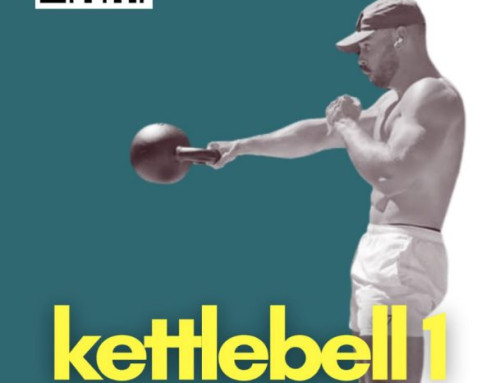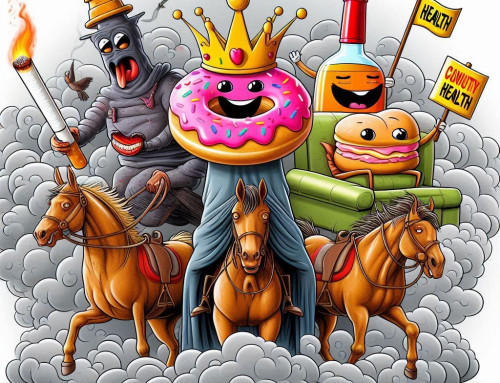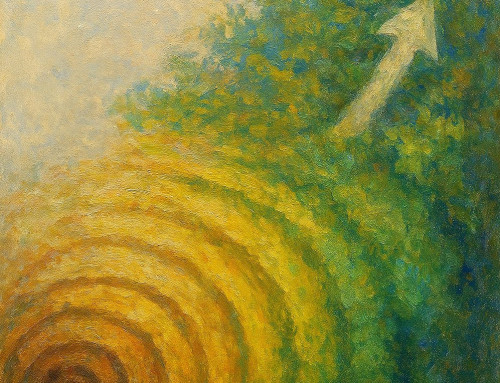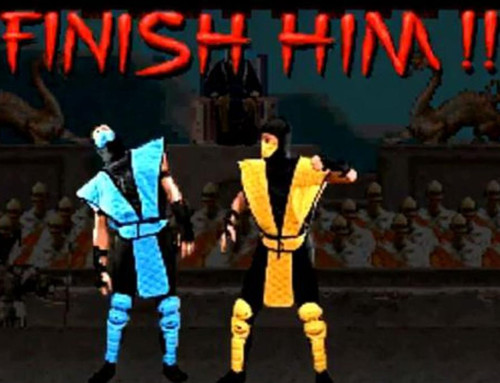In the sixth grade, my final year in elementary school where I grew up, we went through a program called, “D.A.R.E.” (Drug Abuse Resistance Education). For the most part it was an easy class of doing skits in front of class where you “just say no” anytime the instructor asked if you wanted to do some drugs or alcohol. Unless you’re my friend, Tim, who always said yes to get a laugh. It was funny the first time.
At the end of the program, our final project was to write an essay on how we will never use drugs or alcohol as well as how important the D.A.R.E program was to me. There weren’t really any grades, it was just a pass/fail type of class. Do the essay, pass, and do a little graduation ceremony in the gym to get a piece of paper and your parent(s) can come watch.
I truly felt the class was a load of crap. And even though lying on the essay and saying the class was great and that I would never do drugs or alcohol, I just couldn’t do it. My essay comprised of me stating that I couldn’t promise anything and that I didn’t find the program very important as they never really told us why we were supposed to hate drugs and alcohol. Just vague, “it’s all really bad for you.” It seemed to me that they were lying to me and only telling me “I will instantly get addicted and then die”.
I saw drugs help people in the hospital. That told me there were upsides to them at times. I also saw my dad responsibly drink a beer on occasion. In my mind, he was never wrong. Upon turning the paper in, I was told to re-write it or I would fail the class. I asked if they would hold me back from graduating to the 7th grade and going on to junior high. They said no, it wouldn’t affect anything. I saw no point in re-writing it. The instructor promptly failed me from the class.
The funny part is, I was probably the last person in that class to ever touch any drugs or alcohol. I had no interest and was too focused on baseball and martial arts. My point is, I felt they were lying to me. They withheld information to get me to not do drugs or alcohol. Their mission was noble. Their execution was terrible. You don’t have to lie to children to get them to do what you want. Lying is the easy way out when you feel the ends justify the means.
As soon as I felt I was being lied to, they lost my trust. If they had told me the truth about drugs and alcohol and just asked me to write an essay on what I learned from the class and if it was useful, I would have done so with no issue. I would have truly learned about why some people fall into abuse (which they never discussed), what it does to the body and how, at times, they may have upsides if used correctly, such as when prescribed or administered by a doctor.
In the martial arts world, lies have plagued the field so much that the average person seems to know more misinformation than real information about martial arts. Some are blatant lies to gain students, boost an ego, sell items or just cover up a lack of knowledge. Other lies are simply stretching the truth which tends to lean towards an ego boost. And then there are assumptions to fill in knowledge gaps. Sometimes the person knows they are lying, other times they may not. The blatant lies are things like the mystical no touch knockout or lying about rank or accomplishments.
Thankfully, with technology and the ease of sharing information (such as the internet), this type of information has become much easier to fact-check. These blatant lies are finally starting to die off. I’ve written a book about some of these lies (A Journey Through Martial Arts Myths and Misconceptions) to understand where and why some of this misinformation comes from. Therefore, I won’t rehash what I’ve already written about. Stretching the truth is a common part of human nature in telling stories.
I spoke with an instructor years ago that told a story about how three Marines walked into his studio and challenged him to a fight to prove his style didn’t work. He stated that he proceeded to fight and defeat all three. Afterwards they were so impressed that they signed up to train with him. While this instructor was a decent martial artist, there is no chance this happened. Defeating multiple attackers at once is a common brag and a big red flag to me.
Even if those multiple attackers have no martial arts experience, that’s an incredibly tall order to “defeat” multiple attackers. The other red flag was that he stated they were Marines. There was no need to state that other than to get the listener to believe that these people were tough guys. Ask anyone who the toughest people are, and chances are the response will be a Marine. Excess, unnecessary details are a solid sign that someone is lying.
One type of lie I’d like to focus on for a moment are the lies well tell through assumptions. Many of us can spot the big blatant lies. And typically, the “stretch the truth” type of lie is just an ego builder that doesn’t affect us much. But assumptive lies can be extremely dangerous. It’s dangerous on many levels as even an honest person can tell this type of lie.
Did you know that we have a blind spot in our vision? I’m speaking literally here, not figuratively. Where our eyeball attaches to our brain creates a blind spot. Yet, we don’t walk around seeing a black spot everywhere. Why? Because our brain fills in the gaps. It essentially makes an assumption to give you an uninterrupted view. However, you can actually see this bling spot if you really want to.
Grab a piece of paper and draw two fairly small markings apart from each other, such as a plus sign and a dot or a circle and a square. Bring the paper fairly close to your face and close one eye and stare at just one of the markings. From there, slowly move the paper away from your face until the other marking disappears. When that happens, you’ve found your blind spot! You can also find this test on YouTube if it’s easier.
My point of explaining our vision’s blind spot is that it’s natural for us to fill in gaps with assumptions based on other information and past experiences. Normally, this isn’t an issue. However, when it comes to martial arts, especially self-defense, this can be dangerous. There are multiple ways this can happen. One way I see this play out is the difference between sport style martial arts versus self-defense.
Many martial artists who train in the sport related arts have a tendency to believe this training transfers directly over to self-defense. In some ways, it does, and in some ways it doesn’t. To give a couple examples, most martial artists train using a dobok or a gi (martial arts uniform) and no shoes. These uniforms are designed to not limit you on movement. But we don’t wear this uniform when walking around in public. And we wear shoes. Tight pants, skirts, high heels, and heavy boots can affect your technique. Especially kicking. Doing high kicks in a sport related art can be very useful. Doing so in a self-defense situation can be deadly if one has not trained with those clothes and footwear on.
A sport fighter’s only experience of footing is on mats or in a clean ring. This is where an assumption can occur. Another example when it comes to sport versus self-defense techniques is ground grappling on some occasions. In a one-on-one sport fight, grappling can dominate a fight. But in a street fight, this can be deadly if done at the wrong time. For one, the person you are grappling with may have a weapon.
You are unlikely to see the weapon get drawn and used in a grappling situation. The other issue is that the attacker may have friends. If you are locked up with one person, that leaves you vulnerable to other attackers. Mind you, the opposite is also true. A self-defense instructor who has never competed will undoubtably make assumptions. Assumptions that some techniques will work in a sport related competition or assumptions about the mental state of a competitor.
If you’ve never competed, there is nothing I can explain that will help much. My first competition I had all sorts of thoughts, combinations and ideas of how I would spar, attack, defend, move, etc. I had it all figured out and was convinced I would win with ease. I proceeded to lose decisively. Nothing worked. It wasn’t until I competed that I realized I had made assumptions about what would work. On paper, it had all made logical sense. But when applied, it failed miserably. I had made assumptions based on my self-defense training and much of it was wrong.
My point is, we can’t make these assumptions without testing them first. I see instructors teaching things that I know they’ve never actually used, be it in self-defense or competition. Most of the time, they aren’t completely wrong. It’s small things that get overlooked that can be deadly. The best example I can give is my own mistake of assumption in years past is knife fighting.
My instructor taught some basic knife techniques and defenses as he was law enforcement and trained with the knife and had experience with it in real world situations. But I missed something seemingly small and insignificant. We all have used a knife to cut an apple or steak. How do you hold that knife? Do you place your thumb or finger on the spine of the knife when you are cutting? Most do. And so did I when I first started training with knives. I placed my thumb on the spine of the knife while holding it and mocked cutting the air to train with it.
Having your thumb or finger on the spine adds to the cutting power. My assumption was that if it helps with cutting my food then it should help with cutting for self-defense. Makes total sense, right? Well, I learned quickly why that was a bad assumption when I was sparring with an unsharpened metal knife one day. I swiped at my sparring partner to “cut” him across the body. He reacted by throwing his arms up to protect himself from the cut by taking the cut on his arms instead. My knife went flying out of my hand and onto the ground while he proceeded to stab and slash me to death with his unsharpened metal blade.
Having my thumb on the spine meant not having it wrapped around the handle for a firm grip. This led to it easily being knocked out of my hand. The LAST thing you want to have happen in a real self-defense situation that involves a knife is to have it knocked out of your hand. When I picked the knife back up and resumed the sparring, I changed to what we call a natural grip. This involves gripping fully onto the handle with no thumb on the spine. I never lost my knife, or any other weapon I train with, again.
Thankfully I learned my lesson in a controlled environment where my life was not on the line. If I had made that mistake in a real-life self-defense situation, I would be dead. This is why I say that these assumptive lies can be deadly and dangerous. As instructors, we must know exactly what we are talking about and teaching. If we can’t definitively state what we are teaching is useful, we either need to state that we aren’t sure and the student should be cautious, or simply not teach it.
It’s so easy for these things to happen. There’s no intended malice in it. Generally, it comes from simply overlooking details of what we are taught. My students know I’m extremely strict and stubborn with their material. They hear me say it’s all in the details and we may focus half a class on making what seems like a tiny insignificant detail, but it’s not insignificant. Those tiny details are what separate a technique that works versus one that doesn’t. This is how martial arts systems get watered down.
Many of these systems were developed by someone who developed it out of necessity. Take Taekwondo for instance. General Choi needed to train his troops to deal with fighting close combat in the trenches where firearms are just as likely to strike friend as much as foe. Hand to hand combat is what won so many fights in the trenches in Vietnam. The South Korean army was feared in the trenches due to their martial arts training.
But what happens is that those first-generation students/soldiers teach the system to their students. If those students don’t pressure test their techniques or overlook the small details, then the system gets watered down to something that’s useless beyond just exercise. Or a student believes they can improve a technique based on their experience in the comfort of their dojang/dojo (martial arts training facility). If this new improved technique isn’t tested in a realistic situation, it may not work as desired.
This is why many instructors are so strict with what they teach. They refuse to let the system get weakened. Sadly, those of us that are that strict rarely see students reach black belt as many give up or switch to an instructor who allows them to get their black belt in a year. The color of belt around their waist becomes more important than the knowledge at that point.
This brings me to my last type of lie. The lies we tell ourselves. Far too often we overlook our downfalls to ignore our weaknesses to solely focus on our strengths. Sometimes the opposite is the issue. Seeing a student focus too much on their weaknesses and what they can’t do while overlooking the amazing things they have accomplished. Or we focus on the wrong goals as noted previously. Wanting a belt rank more than the knowledge and ability. These are all damaging lies. We all have strengths, and we all have weaknesses. Perfection doesn’t exist.
Hiding these weaknesses are what creates an ego that can stifle one’s training and advancement. While only focusing on one’s own weaknesses can deflate and destroy one’s motivation. As an instructor, my job is to help you discover both. Catering to your strengths while helping you improve your weaknesses. I have to force you to be honest with yourself. Every now and then I’ll have a student that tries to hide a weakness. I see the ego starting to grow from this. I then have to place them in a position to face their weakness. A good example of this was a student I had a number of years ago that was fantastic at kicking and striking in Taekwondo. He got the best of me plenty of times while sparring. But I saw that ego growing. I told him he was at the rank where we needed to work on more groundwork and grappling. He clearly didn’t want to. Suggesting he was too good to be taken down anyway, so there was no need to train ground defenses/escapes. That’s a big red flag of someone lying to themselves. They make excuses to not train something.
Stating something a long the lines of, “I don’t train that as it’s not useful” or “I’m too good in this area over here, so I would never end up in that position”. I’m fairly certain every martial artist has stated this to someone at some point. It’s a defense mechanism to hide the fact that we may not know something or be bad at something. It’s very normal. This is where the instructor needs to step in and break that mindset. For this specific student, I had him do ground sparring.
He did exactly what I expected. He attempted to muscle his way through it as he was in great physical shape. But that doesn’t go very far in ground sparring. You get drained of energy and burn out within the first thirty seconds. And I have a good laugh watching the color drain from their face as they teeter on the edge of vomiting. Someone who is even slightly trained in ground grappling (such as Brazilian Jiu-Jitsu), knows to stay relaxed and work on bettering their position to set up an escape or submission.
Some students, when forced to expose their weaknesses, start to drop the ego and accept that they need to improve that aspect. Others, unfortunately, decide to change schools or quit to maintain their ego. The higher rank they are, the more likely they will fight this and remove themselves from the situation to preserve their ego. This is why, as an instructor, we must tackle this issue early on. This is a tough line to walk, however, as exposing a student’s weakness too much can be deflating. And boosting their moral by telling them constantly how great they are can lead to that ego growing.
This is one of many, many reasons why being a good teacher is so incredibly hard and why we fail sometimes. After more than thirty years, I’m still learning how to be a better teacher just as much as I’m trying to learn to be a better martial artist. Everything comes back to honesty though. The truth always comes out. It’s best to speak the truth rather than have it exposed.







Leave A Comment